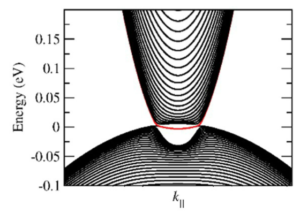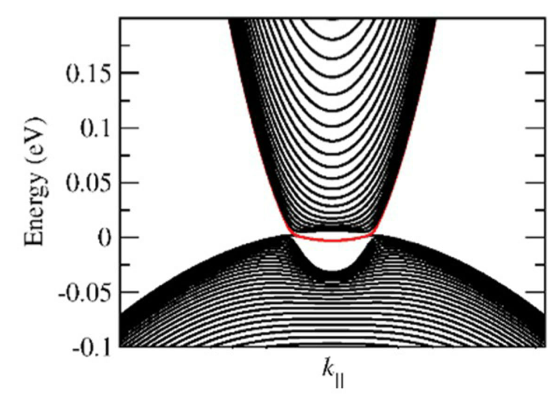An international collaboration of researchers from China, US, Switzerland and Trinity College, Dublin, has published in Nature on the Quantum Hall effect based on Weyl orbits in cadmium arsenide (Cd3As2).
The quantum Hall effect, which can be observed as a change in the electrical characteristics of a 2D material at low temperature as an intense magnetic field is applied, is one the most studied phenomena in condensed matter physics. The effect manifests itself in two-dimensional materials, such as graphene, because of the electrons of the solid moving along circular orbits under the effect of a magnetic field. The team has now uncovered a new phenomenon, namely a form of the quantum Hall effect in the three-dimensional compound: cadmium arsenide. This is the first time that the quantum Hall effect has been observed in a three-dimensional material, a feature enabled by the peculiar structure of cadmium arsenide itself. Cadmium arsenide belongs to a class of compounds called “topological”. In these, electrons’ motion is dictated by the crystal structure and it is usually different from that in conventional metals or semiconductors.
Detecting such anomalies in the electrons’ motion is not an easy task. The Chinese team, headed by Prof. Faxian Xiu from Fudan University, has grown V-edge-shaped cadmium arsenide samples and measured their electrical properties at temperatures down to 0.3 degree from the absolute zero (0.3K). The measurements were performed in magnetic fields so high that they cannot be produced in a normal lab, but require dedicated large-scale facilities (in China and the US). Then, the interpretation of the results required accurate modeling, which was performed by the Trinity College, Dublin, team headed by Prof. Stefano Sanvito, of CRANN, AMBER and The School of Physics, in collaboration with Dr. Narayan, a former student of Prof. Sanvito’s now at ETH Zurich. Given the complexity of the phenomena investigated, it would have been extremely difficult to preform the study within a single research group.
This work paves the way for further investigation of topological effects in three-dimension materials with potential for novel applications, in particular in the emerging field of quantum technologies such as quantum computing, cryptography and quantum sensing.

